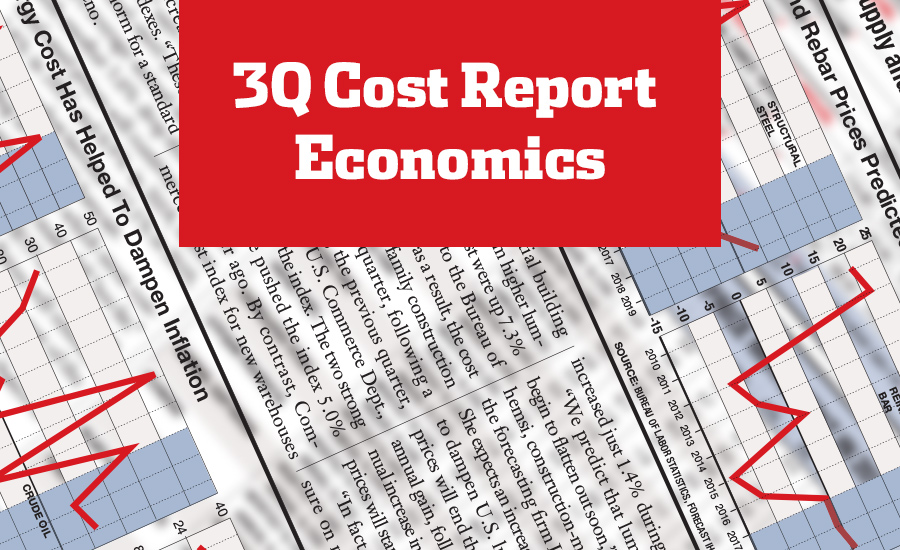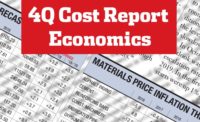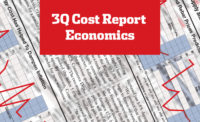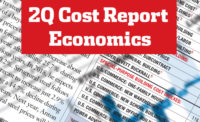Through the first eight months of 2019, construction starts were down 5% compared to the same time period last year, on a year-to-date basis, according to Dodge Data & Analytics. The decline is due to a drop in both residential and non-residential building, the data indicates. Non-building construction, spurred by electric and gas work, was 3% higher than in the first eight months of 2018.
“Heading into 2019, we had expected to see the residential sector pull back from levels reached over the past several years, and that scenario is playing out as expected,” says Richard Branch, chief economist at Dodge Data & Analytics. “Both single and multifamily housing have turned the corner and are now heading downward.”
Dodge reports that residential construction is 8% lower, on a year-to-date basis, than the first eight months of last year. “Affordability and lack of supply for starter homes continue to hamper the purchasing side of the market, while flattening vacancy rates have driven rental developers to pull back, especially in larger metropolitan areas such as New York,” says Branch.
|
Related Link |
While non-residential work declined 7% overall, commercial building starts increased 3% year-to-date, due to a rise in office, warehouse and parking lot construction. Branch notes that the boost in office construction was not expected, and is largely caused by large projects such as the new Amazon headquarters in Arlington, Va., and data centers.
“Growth in office construction continues to remain positive despite easing in economic growth and declines in business sentiment,” he says.
On the material side, IHS Markit is predicting a 10.4% decrease in softwood lumber for 2019, revised from the 11.6% drop forecasted last quarter. ENR’s 20-city average price for lumber is currently 8.5% below this time last year.
“While we expect a slight price recovery for softwood lumber in the second half of 2019, the increase in prices [spurred by mill curtailments and closures] will be counterbalanced by a lower demand profile,” says Deni Koenhemsi, senior economist, pricing and purchasing, at IHS Markit. “These two opposing dynamics will keep prices in check for the rest of 2019.”
IHS Markit foresees a 3.3% increase for lumber in 2020, rising slightly from the second quarter’s 3% prediction for the same time period.
ENR’s 20-city average price for steel is 2.3% above this time last year, consistent with IHS Markit’s projection of a 2% rise for 2019.
“Steel is defined by tepid demand and booming production—an unstable combination,” says John Anton, director of steel analytics at IHS Markit. “China and India are the culprits for overproduction. Other regions were late to react, but they are not really to blame for surplus or low prices.”
He continues, “Prices will be weak through the end of 2019, with the softness forecast to continue into early 2020. We assume low prices will eventually force production cuts and allow a recovery, but it has been delayed until the second half of 2020.”
IHS Markit predicts a 1.2% drop in steel prices next year. “We will be watching production data very carefully. Mills have announced cuts, but really haven’t followed through to an impactful extent,” says Anton.
Looking forward to the fourth quarter of 2019 and beyond, construction is expected to continue to slow. Henry D’Esposito, senior research analyst at real estate services firm JLL, describes the outlook for 2020 as “increasingly dim,” citing tariffs as a leading cause. “The volatility around current trade policy has created headaches for cost estimators who are being forced into worst-case assumptions without any way to accurately predict future tariffs,” he says.
Anton warns of another possible hazard: weather. “Beware of weather risk in 2020, more than our normal warning. Australian cyclones are always a risk in December through April,” he says, adding that should the cyclones hit, prices of iron ore and steel would be expected to rise dramatically. “Europe and North America are far from Australia, but steel markets are global with previous episodes seeing worldwide price impacts.”






Post a comment to this article
Report Abusive Comment